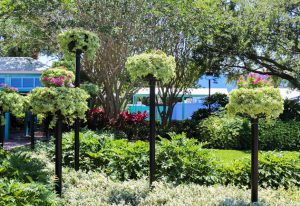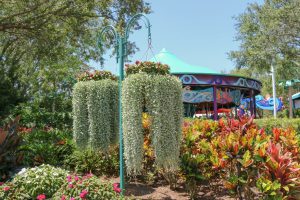Last Updated on July 19, 2018 by Jacqueline Bourdon
Better with Bees: Inside SeaWorld’s Horticulture Department
When thinking of SeaWorld, your mind may immediately go to one thing: orcas. However, the most common and most diverse living species in the park isn’t aquatic and can be found everywhere: plants.

Mark Russell, director of horticulture, leads the horticulture team. The department is responsible for creating beautiful displays and showcasing diverse fauna for park guests.
“February through April is our primary pruning period. We focus on the more freeze resistant plants first, then move through as the season goes on,” Russell said. “This allows for better foliage and flowering throughout the year.”
In addition to caring for the plants, Russell’s team works to bring enchanting floral displays to life. They work throughout the park incorporating flowers, vines, and alternative ground cover into pots, planters and specialty-built display pieces.

“We like to elevate our flowers. Not only does it bring the color of the area up, but it also protects the plants from foot traffic,” Russell said.
One area of responsibility for the Horticulture team includes attracting honey bee swarms to one of many “swarm buckets”. The buckets are located around the parks in areas not occupied by guests or employee ambassadors. SeaWorld wants to attract the bees to their parks, and in doing so protects them from potential extermination at nearby properties.

“We then use some of the honey that the bees produce to aid in animal rehabilitation.”
One of the best benefits of SeaWorld’s honey bee preservation program is using honey – a natural antimicrobial, antibacterial wound-care solution – to help injured animals in the park. As part of the park’s commitment to conservation, the SeaWorld Rescue Team has come to the aid of more than 31,000 injured and orphaned animals in need.
“Our Veterinary Team uses honey on rescued sea turtles to help heal wounds on their shell. Injured manatees have honey applied to heal wounds caused in boating accidents,” Russell said. “We take great pride in providing honey from our rescued bees to help our veterinary team care for our many species of rescued animals here at the park.”
 0
0
